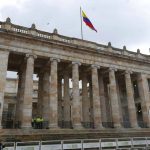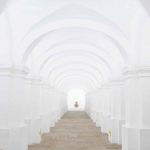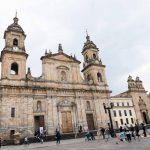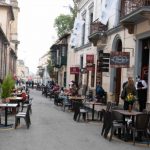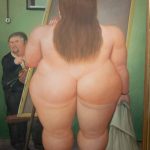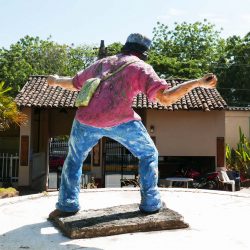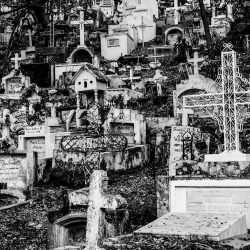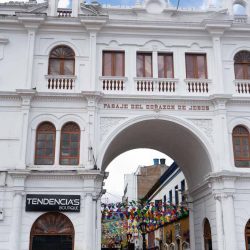Bogota may have been relatively free of drug violence (the cartels were in Medellin and Cali), but it had its fair share of violent problems as well. Just like Medellin it is slowly recovering, though is not as far in that process.
(there is also another article with more photos of Bogota)
It is a fascinating place though. Bogota is on one side marked by a hill (Monserrate), which provides vistas over the city. The historic centre, especially the Candelaria neighborhood, is full of narrow streets, filled with bars, restaurants and museums. But it’s also surrounded by tricky barrios (Egipto, and further south) and crowded by pickpockets and homeless people.
Bogota gets safer towards the north. The international centre is a collection of office blocks, perfectly safe during the day but tricky at night. From Chapinero on things get better. But in Bogota you always have to be on-guard. As a reward there is lots of cool stuff to do, including world-class museums.
CONTENTS

General introduction
Located at around 2’500 metres, Bogota is perfectly mild during the day but can get chilly during the night. The capital, like Medellin is also stretched out from north to south, though is a bit ‘fatter’ as there are no real mountains on the western side.
It definitely feels more urban than the other big city in Colombia. The weather plays a part in that. The run-down centre as well. Bogota received a public transport upgrade, but somehow it got stuck halfway: good enough for a first step, but not nearly as safe and elaborate as Medellin.
Food and drinks
Bogota is the food capital of Colombia. Especially the Chapinero district (Salvo Patria, Mini-Mal) is famous for a long list of good restaurants. But Usaquen is a treat as well.
I personally mainly explored the centre. The Pasteleria Francesa is one of the nicest places around. Great fresh bread, better coffee, and a patio that is just perfect. Relatively close is Groso, an Argentinian pasteleria with great coffee and empanadas, amongst others. For pizza, go to Pizzeria Madre. In what looks like a former garage, they serve great (and expensive) pizzas.
Activities / Things to do
- Cerro Monserrate: the focal point of Bogota life, this is a monastery up the hill overlooking the city. Walking there takes 1-1,5 hours up a steep stairs, but provides amazing views. Best time to do that is on sunday mornings, when locals also do the hike. On other times there are reports of robberies. The easier and safer way of course is to take the Teleferiqo (cable car) or Funicular (mountain train). But here as well: be careful when walking up to the base stations
- Museo de Oro: world-class gold museum. You can walk around for hours here, following the history of several indigenous tribes and regions and how they used gold. There are so many artifacts it is dazzling. At the end is an amazing light show which puts gold front and center
- Museo Nacional de Colombia: known as the Panoptico building, this imposing building was used as a jail until 1946. In the following years it was converted into the national museum. It houses collections on history, art and culture of Colombia
- art:
- Museo Botero: this one is part of a massive complex called Colleccion de Arte del Banco de la Republica. In the Botero museum you can find dozens of paintings and some sculptures by the Colombian master, but also an impressive collection of works of other artists, bought (or received as gifts) by Botero himself. The MAMU (Museo de Arte Miguel Urrutia, full of contemporary art) and other museums are in the same complex
- Espacio KB: cool art gallery in the northern part of Chapinero. The area is a bit rough, best to go here at night though when the nightlife is up and running
- Mambo: great museum of contemporary art in the northern part of the centre. It mainly has temporary exhibitions and a cosy coffeeshop inside
- Plaza de Bolivar: the spiritual and political heart of Colombia and usually the focal point of demonstrations. The Bolivar plaza is surrounded by the cathedral, the modernist Palacio de Justicio and the classic Capitolio Nacional
- Biblioteca Arango: opposite of the Botero museum, this library is more of an arts centre including a concert hall
- Candelaria: this barrio in the historic centre received a massive upgrade in the last couple of years. It is now a backpacker’s paradise full of small shops, cafes and restaurants close to the Plaza Bolivar
- Planetario: amazing architecture and amazing exhibitions in this planetarium and space exhibition
- Parque Central Simon Bolivar: Bogota’s biggest park, a couple of kilometres northwest of the international centre. It’s on your way by bus to the airport, not too far away from the Salitre bus terminal
- outside of Bogota: Catedral de Sal in Zipaquira: must-see salt mine. In the salt crosses and entire halls were hewn out. The Catedral de Sal depicts the crucifiction of Jesus and uses elaborate lighting to create impressive scenes
Getting to Bogota and getting around
- air: the El Dorado airport is relatively new and located west of town. From there a Transmilenio bus will take you into the city
- bus: Bogota has three bus stations. The Terminal Salitre (www.terminaldetransporte.gov.co) is the main one, on the road to the airport. Exit the Transmilenio at El Tiempo station and walk ten minutes. All buses from Salitre also stop at either Terminal de Sur (for southbound buses) or Punta del Norte (for northbound buses). Please be aware: not all bus routes are mentioned on the transport site mentioned above
- getting around: a Uber or a taxi is very cheap here. You might need them, as especially the centre gets creepy after dark. Even if it is just two blocks to your hotel, be wise and grab a cab. Otherwise, the (red) Transmilenio is your best choice. It is relatively safe, except rush hours (when pickpockets are active) or when you venture too far south. There are also smaller Transmilenio buses, usually blue. These can best be avoided for safety reasons. For the Transmilenio you need a red card, available at ticket offices at almost all stations
Miscellaneous
- Weather: not as good as you would hope and not as bad as you think. During daytime Bogota temperatures are a mild 20 to 25 degrees. It gets relatively fresh quickly in the evenings though. Rain is also a frequent guest in the capital
- Safety: the furter north, the safer. Candelaria, near the international centre, is safe as well, but surrounding areas (Egipto, Santa Fe) should be avoided. From Chapinero onwards it gets better. Ask locals which areas are safe, don’t show off valuables, be alert all the time. Bogota is not an easy city

